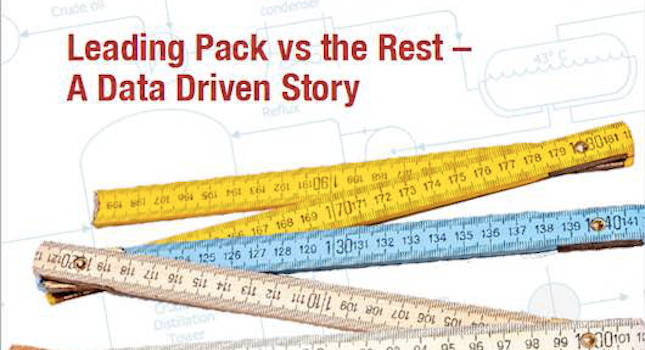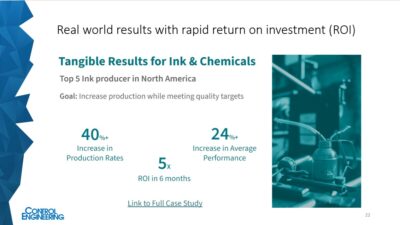Control System Integrators Association (CSIA) provided benchmarking factors to improve operational and financial performance, as well as recruiting and retention for engineering and technology personnel.

Learning Objectives
- Benchmarking of system integrator financial and operational indicators is key for continuous improvement.
- CSIA advice includes operational efficiency, billing rates, utilization, cash flow.
- Recruiting and retaining knowledgeable technology minded people is important.
A four-year financial and operational benchmark study of 26 control system integrators says “the system integration business can be a good investment,” according to the report analysis – “Leading Pack vs. the Rest – A Data Driven Story.” The 16-page white paper from the Control System Integrators Association (CSIA), underwritten by Rockwell Automation, discusses success factors that separates 16 system integrators leading the pack from the rest. The report identifies no system integrators.
“Benchmarking of key financial and operational indicators is key for continuous improvement of any business,” said Jose Rivera, CSIA chief executive officer. “CSIA has provided participating system integration members with valuable and realistic benchmarking data.”
The analysis includes third-quarter 2016 through second-quarter 2020 data. Among participants, 20 submitted five years of data. Report benchmarks include earnings before interest, taxes, depreciation, and amortization (EBITDA), seen as an accurate measure of a firm’s operating profitability because it excludes non-operating factors, such as interest expenses, taxes and intangible assets.
Calculations include utilization based on hours and dollars, revenue per total and billable employee, days cash on-hand, labor multiplier and days in backlog. This program is administered by CSIA and the data is managed by a third party in a secure and confidential repository. CSIA Benchmarking Committee provided analytics.
CSIA advice: Operational efficiency, billing rates, utilization, cash flow
CSIA offered these observations of the report:
- Some companies have performed well and shown consistent revenue growth.
- Leading pack companies continue to improve operational efficiency as company size increased.
- While EBITDA has decreased, it has remained positive on average. A group of companies show revenue growth and good EBITDA consistently.
- Non-labor revenue is a significant consideration in the performance of the leading pack.
- There is room to improve, especially on the utilization metric.
Specific advice includes sustaining labor rates billed to clients, including junior staff in projects to lower costs, and improving utilization. The report said, “The secret to the growth from labor revenue is not just in the rates but in the volume of labor revenue. The volume increase is reflected in the number of employees and their utilization. EBITDA is impacted by the ratio of billable to non-billable employees.”
Additional advice from the report is, “Smaller companies should emulate the larger companies and get their billable to non-billable ratio higher.” That includes focusing “on efficiency in management and administrative roles to reduce non-billable headcount.” Also, system integrators should “continue to drive non-labor revenue but keep an eye on the ratio to make sure budgeting and cash flow approaches are still correct.”
CSIA said it hopes the report will promote interesting conversations during planning seasons. Rivera added, “The analyzed period includes the first months of the COVID-19 pandemic. We expect changes to these numbers and count on our Pulse program to track them.”
Source for report data is a CSIA financial benchmarking program offered to its members; more than 60 firms have participated in the benchmarking since its inception in an effort “to provide easy access to relevant member-wide metrics to help business owners and management set realistic targets to improve company operations.”
CSIA: How to recruit, retain knowledgeable technology minded people
Regarding recruiting and retaining new employees, the report says if system integrators (SIs) “can
recruit fast to meet demand, they will be able to grow. A major challenge can be recruiting. Some SIs have taken the challenge seriously by developing their own recruitment machines, showing up year-after-year at their selected schools, promoting their workplace environment and so on. Being competitive in salaries and benefits is critical.”
CSIA has a separate benchmarking program to serve recruiting and retaining skilled engineering and technology talent, called the CSIA Talent Retention Toolbox, 13 pages of detailed metrics.
Edited by Mark T. Hoske, content manager, Control Engineering, CFE Media and Technology, [email protected], using information provide by CSIA, a CFE Media Content Partner.
MORE INSIGHTS
KEYWORDS: Control system integrators, operational benchmarks
CONSIDER THIS
What benchmarks do you use to ensure metrics match your intent?
ONLINE
www.controlsys.org/leadingthepack
See the Global System Integrator Database.
ONLINE extra
Founded in 1994, the Control System Integrators Association (CSIA) is a not-for-profit, global trade association that seeks to advance the industry of control system integration. Control system integrators use their engineering, technical and business skills to help manufacturers and others automate industrial equipment and systems. CSIA helps members improve business skills, provides a forum to share industry expertise and promotes the benefits of hiring a certified control system integrator. CSIA has more than 500 member companies in 35 countries.




